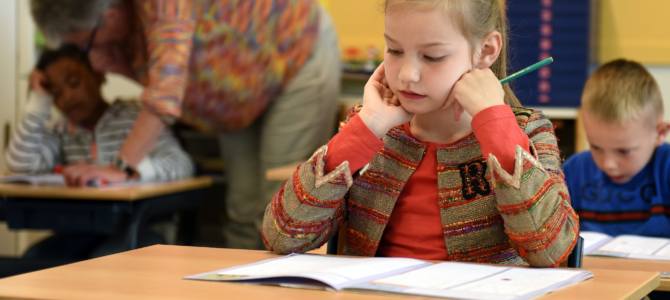A new report summarizes research showing the financial and health repercussions of keeping schools, colleges, and child-care facilities closed far outweigh any risk. The Foundation for Research on Equal Opportunity report also offers recommendations on how to reopen for the safest and fairest results.
Report coauthor Avik Roy said in a tweet the report aims for policymakers to learn of and “heed the educational, social, and public health impact of prolonged school closures” for the nearly 80 million U.S. students who have already been out of school for months in 2020.
The article described the nation’s current educational plans as utterly unsustainable. The closure of public and private schools, institutions of higher education, and child-care facilities harm all families but disproportionately those with lower incomes. Happily, the report says, the solution isn’t difficult or dangerous due to the unique immunity children have to coronavirus.
“The good news is that children are at very low risk of serious illness or death from COVID-19. Indeed, children aged 5–14 are seven times more likely to die of influenza than of COVID-19,” it notes. “Children aged 1–4 are 20 times more likely to die of influenza. Overall, Americans under the age of 25 represent 0.15 percent of all COVID-19 fatalities in the U.S.”
Furthermore, hospitalization rates and transmission rates for school-aged children are extremely low with COVID-19, and the authors asserted that influenza pandemics carry far greater risks for this age group, while schools have never responded with harsh shutdowns. The article debunked the uncertain notion of waiting until a vaccine is ready, as any delay in reopening schools endangers students.
“While the risks of COVID-19 in children are low and manageable, the harms of prolonged school closures are high,” the report says. “According to the American Academy of Pediatrics, ‘The importance of in-person learning is well-documented, and there is already evidence of the negative impacts on children because of school closures in the spring of 2020.’”
The negative impact of students spending long periods without school often results in increased social isolation, physical or sexual abuse, substance use, depression, and suicidal thoughts. This creates challenges for schools in identifying learning deficiencies, putting some students who already struggle at a further disadvantage. The risks of not opening schools place children at a significantly heightened risk of morbidity and mortality.
Although students across the board suffer from school closures, the authors found that poorer children have even fewer opportunities to learn outside of school.
“Researchers have found that differences in outside of school learning opportunities contribute to the academic achievement gap between rich and poor children. The current situation is likely exacerbating this opportunity gap, particularly since poor children are less likely to have internet access at home.”
These students also suffer from not receiving the taxpayer-underwritten school lunch and mental health resources that in-person school provides.
Based on the evidence, The Foundation for Research on Equal Opportunity recommends re-opening schools while following the American Academy of Pediatrics’ guidelines, which the article states is more realistic than those from the Centers for Disease Control. Such guidelines include requiring masks for older children, reasonable distancing, testing, and tracing protocols.
Additionally, the article says states ought to take the lead on developing virtual schooling for students who must stay home. Virtual learning should remain a last resort, however, only after trying alternatives more similar to traditional schooling such as microschools.
The article calls on congress to pass liability protection for child-care providers and schools so they don’t have to jump through so many hoops in trying to re-open and adjust their learning, while requiring they act in good faith. Congress ought to offer a plan for more taxpayer spending as well.
College, unlike K-12 education, is more complicated and can’t be categorized under one approach, the report says. The article suggests colleges get creative and “encourage students to self-report symptoms, and install temperature sensors outside of classrooms to immediately identify symptomatic students.”
The foundation researches expanding economic opportunity for the those experiencing the greatest levels of poverty. Fellows and board members Lanhee Chen, Preston Cooper, Bob Kocher, and Dan Lips, in conjunction with the foundation’s founder and president, Avik Roy, co-authored the article.
Taking a note from other nations, the article acknowledged the potential for America to become the leader in reopening schools by looking at the science to create the best situation possible for students.
“America should strive not merely to do as well as other countries, but to exceed them: by deploying our talent for innovation, and developing new tools for educating children at home and — especially — at school.”









